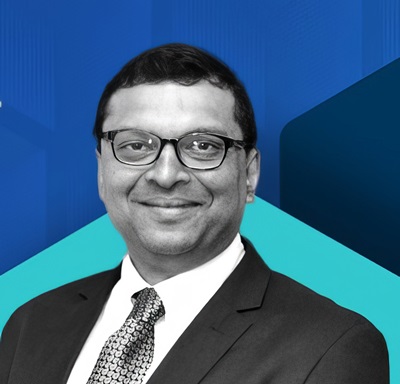.png)
Budget May Have To Reset India’s Growth Engine From Investment To Consumption
It is pointless to debate whether the current slowdown is cyclical or structural; what matters is finding a way forward. The Budget 2025-26 will have to navigate a complex economic landscape where growth momentum has faltered just when it was expected to pick up.


Abheek, an independent economist and ex-Chief Economist at HDFC Bank, provides deep insights into financial markets and policy trends.
January 30, 2025 at 9:44 AM IST
Budget-making is never an easy process, but this year might be particularly difficult. India’s growth fundamentals might be intact. If temporary supply shocks are looked through, inflation is in check. However, there is a palpable shift in the perception of India’s economic performance, with a flagging in momentum at a time when it was expected to accelerate.
The 6.4% GDP growth estimate for 2024-25 released in January was slightly below the lower end of the 6.5-7.0% range forecast by the Chief Economic Adviser and well below the 7% projection of the RBI. This was not entirely surprising as it was an election year, and the government slowed its spending both before and after the July budget.
However, that raises the key question that the budget needs to address.
Has the economy become too dependent on government expenditure, particularly on infrastructure investments, for its strength? Why are private expenditures on both consumption and investment lagging? Can the government continue to ramp up its spending while also managing its debt consolidation?
If one goes by a simple economic model, consumption and exports provide demand, both domestic and external, to firms. If this leads to high capacity utilisation, firms invest in fresh capacity only if they expect sustained demand. This leads to a virtuous cycle and drives overall demand. To get a handle on why domestic aggregate demand is low, the economic sleuth must turn first to a primary source of demand: consumption.
Despite the apparently healthy growth numbers of 7.3% in 2024-25, private consumption demand has been tepid for a while. Ask any consumer-facing company about it, be it a car or shampoo, and it would suggest muted demand as the reason. While consumption weakness started as a rural problem, particularly in the lower income tiers (the so-called K-shaped recovery), it seems to have spread to the lower and middle tiers of middle-class households in urban areas.
One expects the budget to address this. It is somewhat pointless to debate whether the problem is structural or cyclical. Households need more disposable income. The budget might achieve this in two ways. First, by increasing the quantum of transfers to the lower tiers of the population by, for instance, raising the NREGA wages or by increasing support through PM-KISAN. Second, the government could reduce the effective income tax rate for the ₹1 million to ₹2.5 million income tiers.
The case for an urban NREGA remains strong.
The focus on consumption will be particularly important this year. Indian merchandise exports witnessed a remarkable recovery in October particularly in core non-jewellery and non-oil products. However, that source of demand is at risk if the Trump administration were to hike tariffs and unleash a global tariff war. This would not only hurt global trade but global growth as well.
In this context, the approach towards import duties or export subsidies needs attention. China’s excess capacity in multiple industries, such as steel, is leading to relentless dumping. The budget must address this through specific tariff safeguards. However, the finance minister might do well to avoid even a hint of broad-based protection as that might trigger retaliatory and punitive tariffs from the US.
Where does this leave the task of fiscal consolidation? Any countercyclical measure like a consumption boost is a bet on growth picking up and a consequent rise in GDP reining in the debt-to-GDP ratio. If 2025-26 real GDP growth reaches 6.5-7.0%, corresponding to a nominal growth rate of over 10%, the fiscal deficit should align with the mandated glide path of 4.5% of GDP. A consumption recovery could drive private investments, creating a positive feedback loop that could trigger a multi-year cyclical upturn. This would help ensure fiscal discipline over the medium term.
There are various ways to make this math work. One is to streamline revenue expenditures and focus allocations on programmes that have quick consumption multipliers -- NREGA or the PMGSY (rural roads) programmes. The second option is to consider expenditure switches from capital to revenue expenditures. Public investments are likely to have fallen short of the budgeted ₹11 trillion due to the sluggishness in the first half. This could provide fiscal room to sustain government expenditure into the next fiscal year, even with reduced fresh allocations.
Fiscal Vs Monetary
Where does this leave monetary policy, and what should the RBI do? Should there be explicit coordination between fiscal and monetary policy to help growth? The answer is a guarded yes. The RBI manages multiple mandates: controlling inflation, reining in currency volatility, ensuring financial stability, and supporting growth. It has to keep its eye on many balls.
One could argue that the central bank either neglected growth or was a bit too optimistic about its momentum. The result – a tighter monetary policy than desirable—that focused solely on inflation. That said, calling for an immediate policy rate cut is risky, given multiple factors. For one thing, the conventional monetary policy playbook would forbid a rate cut during currency distress. Besides, inflation might rise globally on the back of spiralling tariffs. The central bank might want a little more time to see the lie of the land before taking a rate call.
However, the policy rate is not the RBI’s sole lever. The unpredictability and shortage of money supply or liquidity, the other lever, has been a major drag on bank lending. The RBI needs to address this by infusing some amount of durable liquidity into the system (CRR reduction and RBI’s bond purchases from the market are ways to do this). The RBI should ensure that banks are not forever scrounging around for funds to lend. A predictable supply of adequate monetary fuel is imperative going forward.
Finally, there are the harder questions that the budget must answer. These relate to the long-term policy initiatives that would catalyse India’s growth potential. How, for instance, are its skilling and employment generation initiatives faring? Do they need more funds or better implementation? Should the PLI scheme be restructured as it has been delivered only in a few sectors? Why have the disinvestment and asset monetisation programmes failed to deliver? Are states drawing down their low-cost credit lines efficiently and in sync with India’s growth aspirations?
There are questions galore. One hopes there will be enough answers.



